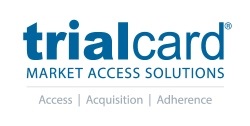Most people who understand the purpose of copay programs easily see their value in terms of providing affordable access to branded pharmaceuticals. A key strategy for the pharmaceutical industry, approximately 150M of all prescriptions written in the United States were associated with the use of a copay card or coupon.
Of course, while there is considerable argument from the payer side that such coupon and copay programs are “subverting their formulary plans,” this is largely a self-serving and hypocritical complaint. Yet beyond this argument – which, to be fair, has points on both sides – there are several benefits of copay programs that are typically overlooked, chief among which is they work extremely well as “acquisition and adherence” strategies. The argument goes something like this:
- Because they provide such clear value to patients, affordability programs like copay and coupon programs are extremely popular with patients – essentially representing the most effective acquisition and engagement strategy that the pharmaceutical industry uses.
- Furthermore, as cost is a highly significant factor in poor adherence to medications, it’s no surprise that persistency increases of close to 20% are common for products supported with copay programs.
But here comes the interesting part: Because copay programs are so appealing, patients – once acquired – tend to return over and over again, thereby providing additional opportunities to engage them in a variety of ways, including:
- product loyalty/CRM programs;
- behaviorally based adherence programs; and
- real-world evidence programs.
Let’s just consider the second example of behaviorally based adherence programs – or adherence programs that go beyond a simple “reminder” communication. Anyone who has tried to deploy such a program will undoubtedly describe the problems encountered in “trying to get patients in the program.” Sure, the intervention probably worked – most adherence tactics do work reasonably well – but if you’re deploying it to only one-tenth of your population, you’re not really moving the needle! But with copay programs, the acquisition is already done and the ability to influence a larger share of the population has been duly increased.
It’s a similar story with “real-world evidence” (RWE) programs. Recruitment tends to be expensive and limited for these programs, but when such an RWE program is coupled with an existing copay program, the problem diminishes immensely. Since patients are already “coming back” to use their copay benefit, it’s much easier to engage them in such programs, which in turn lets sponsors develop the real-world data that helps support the product with prescribers.
So the next time you think about how you’re going to acquire the thousands of patients in your adherence program, remember to look first at the best acquisition tool you have: the humble copay program.







